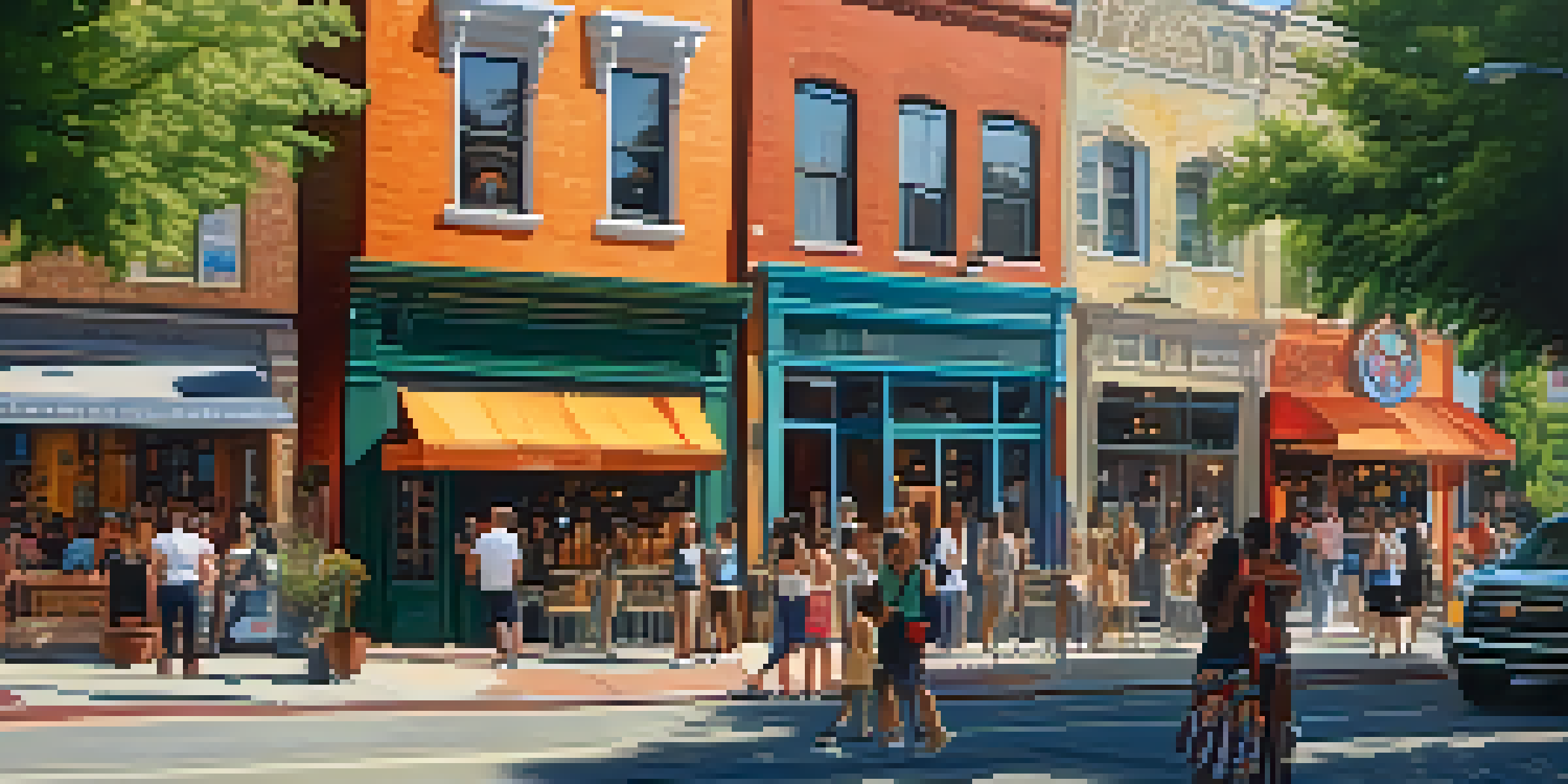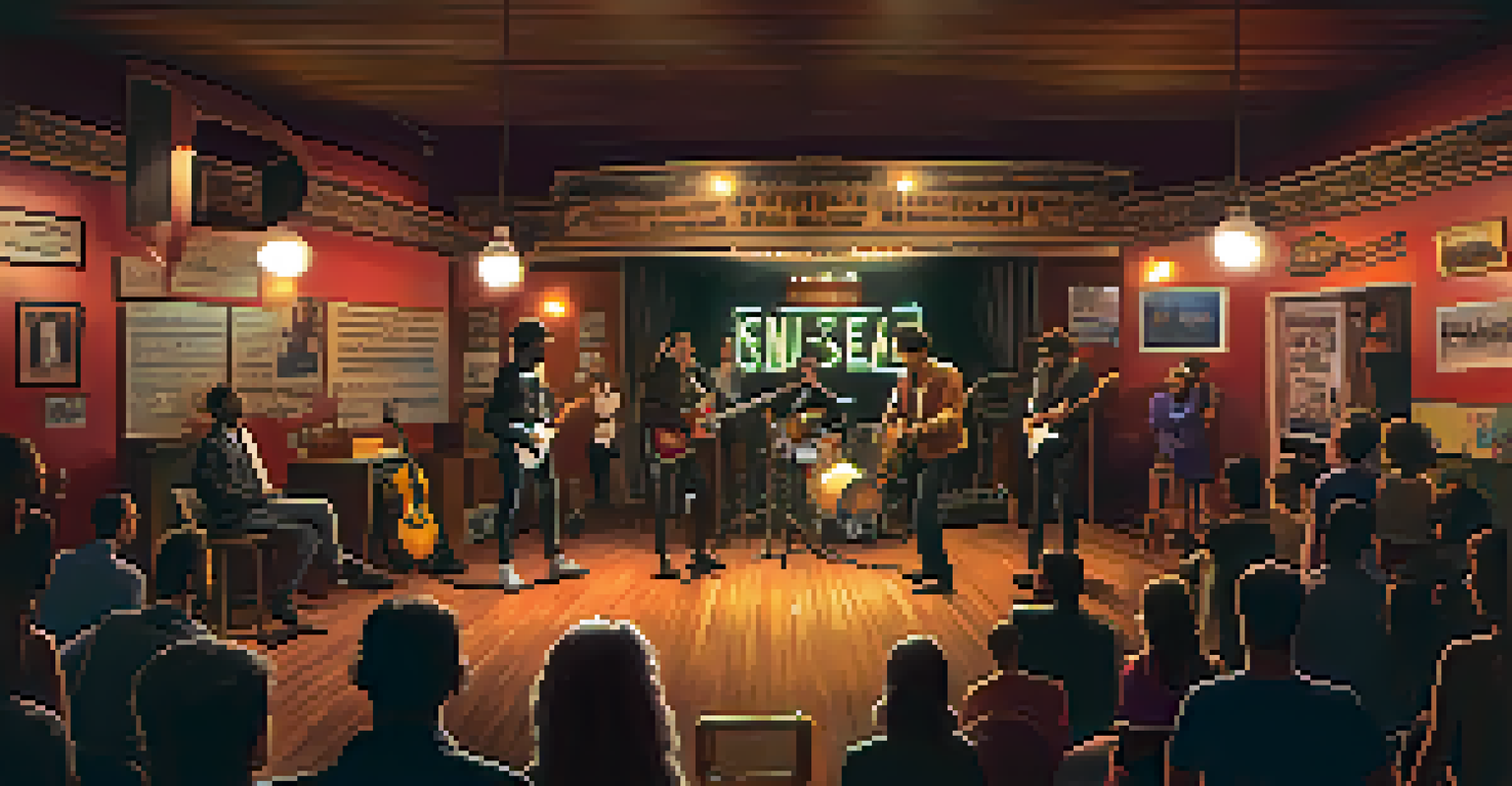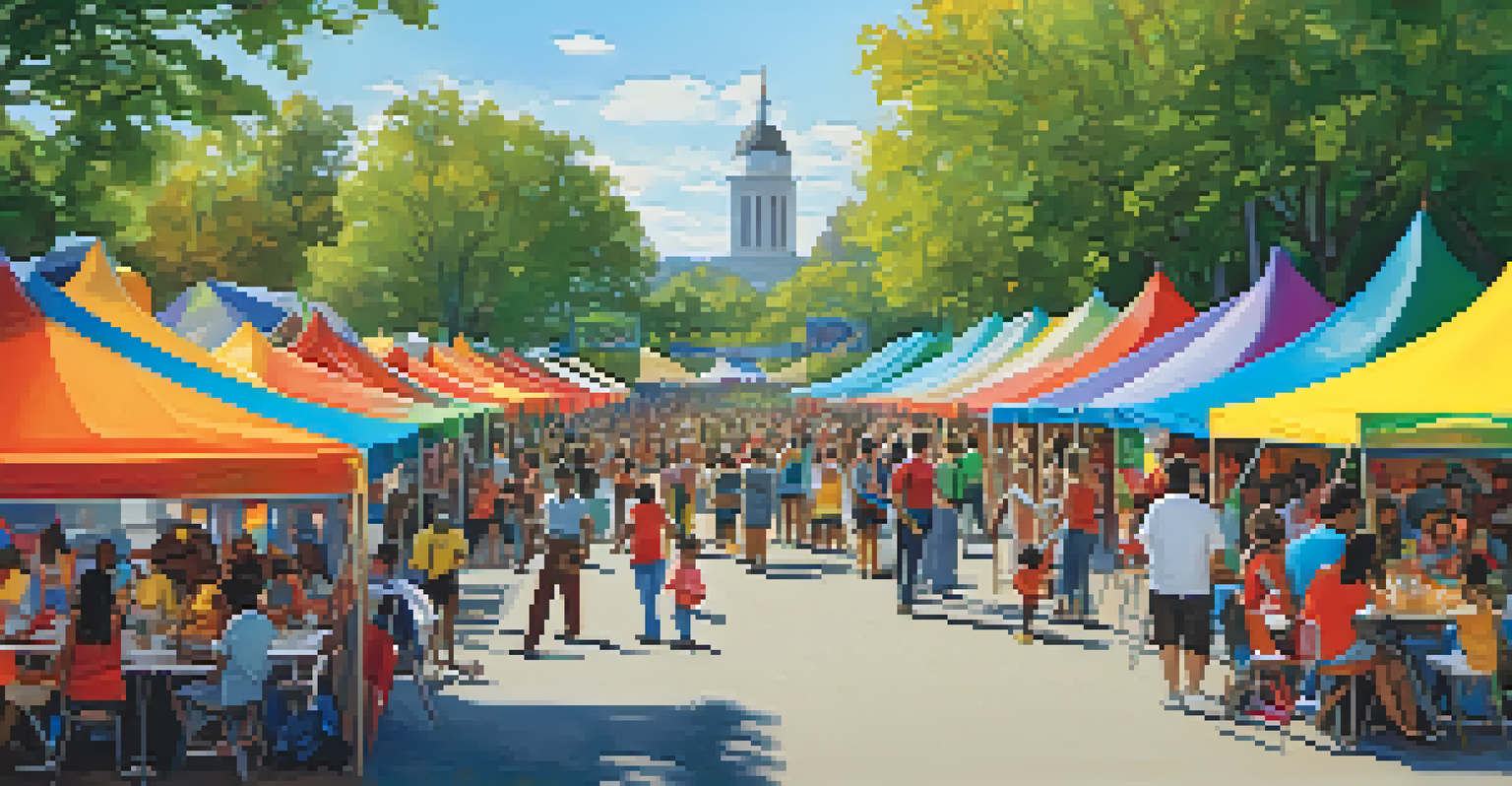Music and Gentrification: A Complex Urban Relationship

Understanding Gentrification in Urban Spaces
Gentrification refers to the transformation of urban neighborhoods, often leading to an influx of wealthier residents and businesses. This process can displace long-time residents and alter the cultural fabric of the area. Essentially, it's a double-edged sword; while it can revitalize neighborhoods, it can also erase the identity and history that made them unique.
Gentrification is a complicated issue, and music is a reflection of that complexity. It tells the stories of the people who have lived and thrived in these neighborhoods.
Typically, gentrification starts with artists and musicians moving into a neighborhood to take advantage of lower rents. Their presence often attracts attention, leading to new investments and the arrival of upscale businesses. However, this revitalization can come at a cost, pushing out the very artists who helped spark the initial interest.
As neighborhoods evolve, the clash of cultures can create tension between new and existing residents. This dynamic is especially palpable in music scenes, where the sounds of a community can change dramatically, reflecting the new demographic trends and economic realities.
The Role of Music in Neighborhood Identity
Music has a powerful ability to shape and reflect the identity of a neighborhood. Local genres often emerge from the unique experiences and histories of the residents, serving as a soundtrack to their lives. For example, the vibrant jazz scene in New Orleans is deeply tied to the city's cultural heritage and social struggles.

When gentrification occurs, the music that once defined the neighborhood can be overshadowed by new styles and influences. This shift can lead to a loss of authenticity, as the original sounds give way to more commercially viable genres that cater to the tastes of incoming residents. The result is often a diluted cultural experience.
Gentrification Alters Neighborhoods
Gentrification transforms urban areas by attracting wealthier residents, often displacing long-time locals and changing the cultural landscape.
Communities may respond to these changes by actively preserving their musical heritage through festivals, community events, and local venues. These efforts not only celebrate the past but also foster a sense of belonging among long-time residents, reminding everyone of the rich history that precedes gentrification.
Case Studies: Music Scenes Facing Gentrification
One notable example is Brooklyn's Williamsburg, which was once a gritty haven for artists and musicians. As gentrification took hold, music venues began to close, unable to afford rising rents. This shift highlights how a vibrant music scene can be threatened by economic pressures, leading to a loss of local culture.
Music is the shorthand of emotion, and when gentrification changes the landscape, it can dilute the very essence of what makes a community unique.
Similarly, the music scene in San Francisco's Mission District has faced challenges due to gentrification. Once a hub for Latinx culture and music, the area is witnessing the emergence of high-end restaurants and boutiques, pushing out local artists and musicians who can no longer afford to live there. Such changes can drastically alter the soundscape of the neighborhood.
These case studies illustrate the broader implications of gentrification on music scenes, showing how economic forces can reshape cultural expressions. They serve as a reminder that music is not just an art form but a vital component of community identity and resilience.
The Push for Cultural Preservation
In response to the threats posed by gentrification, many communities are advocating for cultural preservation. This can involve creating policies that protect local music venues and support artists through grants and funding. By prioritizing cultural initiatives, cities can ensure that the arts continue to thrive amid urban changes.
Community-based organizations often play a crucial role in these efforts, organizing events and initiatives that celebrate local musicians and genres. Such programs not only elevate the voices of marginalized artists but also engage residents in preserving their cultural heritage. These actions help foster a sense of pride and belonging in rapidly changing neighborhoods.
Music Reflects Neighborhood Identity
Local music serves as a powerful expression of community identity, but gentrification can dilute these authentic sounds as new influences emerge.
Additionally, collaborations between artists and local businesses can create mutually beneficial relationships that support the music scene while also driving economic growth. By working together, communities can find ways to embrace change without losing the essence of what makes their neighborhoods unique.
The Impact of Technology on Music and Gentrification
Technology has fundamentally changed how music is produced, distributed, and consumed. Platforms like Spotify and SoundCloud allow artists to reach audiences far beyond their local communities, which can both help and hinder local music scenes. While this democratization of music can elevate unheard voices, it can also lead to the commercialization of local sounds.
As neighborhoods gentrify, the rise of music streaming services can alter the way local artists engage with their communities. Instead of performing at local venues, some may opt to focus on online platforms for broader exposure, potentially disconnecting them from their roots. This shift raises questions about authenticity and the meaning of local music in a globalized world.
Moreover, social media can serve as a double-edged sword, allowing communities to advocate for their music scenes while also inviting outside interest. The challenge lies in balancing the benefits of technology with the need to maintain the rich cultural heritage that defines a neighborhood.
The Role of Policy in Shaping Music and Gentrification
Public policy plays a significant role in determining how gentrification unfolds and affects local music scenes. Zoning laws, tax incentives, and funding for the arts can either support or hinder the survival of music venues. Policymakers must recognize the economic and cultural value of local music and consider how their decisions impact these communities.
For instance, some cities have implemented policies that protect live music venues from closure due to rising rents, ensuring that artists have spaces to perform and connect with their communities. By fostering environments where music can flourish, cities can also benefit from increased tourism and cultural engagement.
Cultural Preservation Efforts Needed
Communities are advocating for cultural preservation through policies and initiatives that protect music venues and support local artists amidst gentrification.
Engaging local artists in policy discussions can lead to more informed decisions that prioritize cultural preservation. When communities have a voice in the planning process, they can advocate for measures that protect their unique identities and ensure that music remains an integral part of urban life.
Looking Ahead: The Future of Music and Gentrification
As cities continue to evolve, the relationship between music and gentrification will likely remain complex and dynamic. Artists and communities will need to adapt to shifting landscapes while striving to preserve their cultural heritage. This ongoing dialogue will be essential in shaping the future of urban music scenes.
Innovative solutions, such as cooperative venues and community-driven projects, may emerge as ways to counteract the negative impacts of gentrification. By fostering collaboration among artists, residents, and local businesses, communities can create vibrant spaces that celebrate diversity and creativity.

Ultimately, the future of music in gentrifying neighborhoods will depend on the collective efforts of residents, artists, and policymakers. By prioritizing cultural preservation and supporting local music, we can work towards creating urban spaces that honor their past while embracing new opportunities for growth.